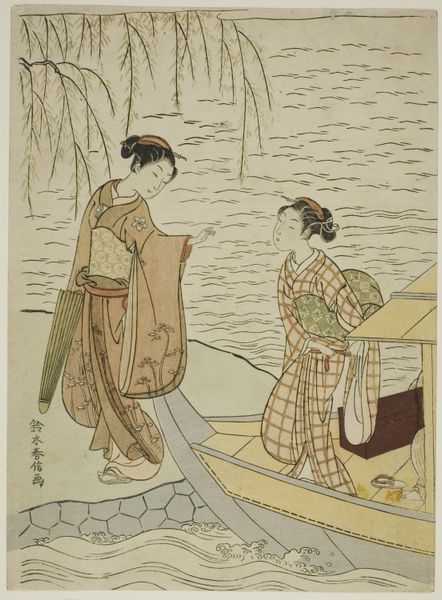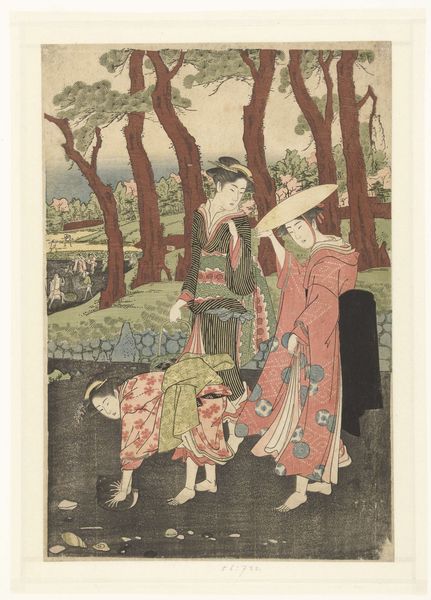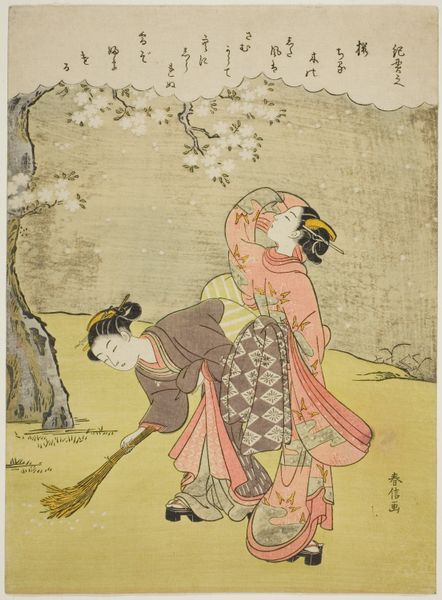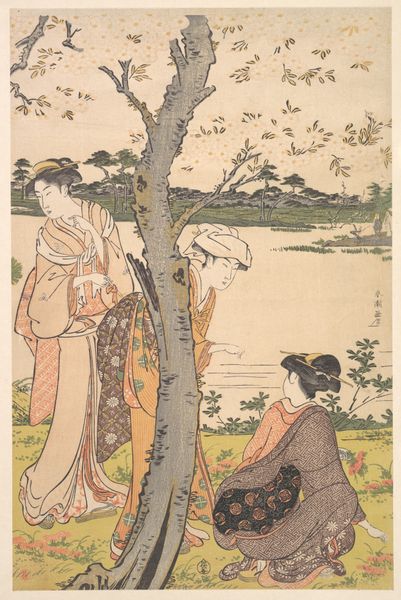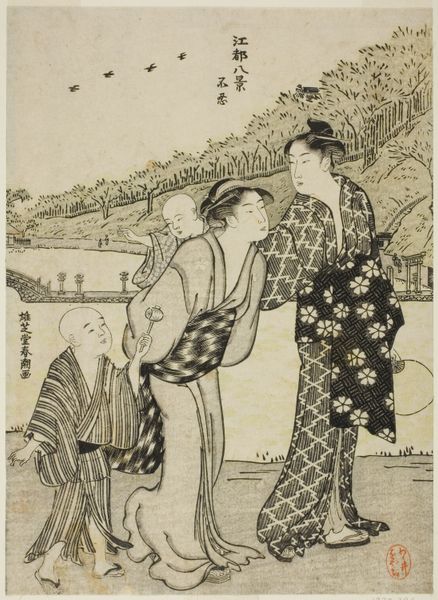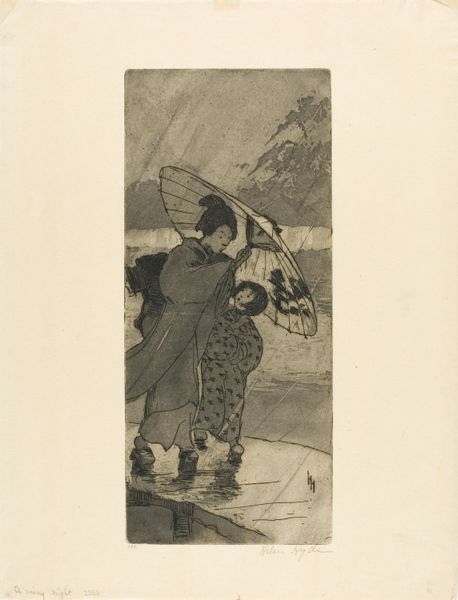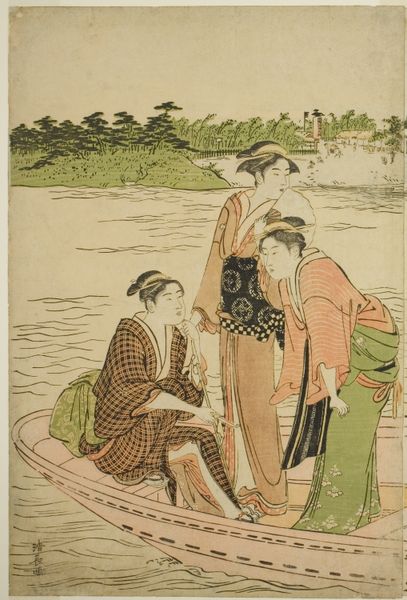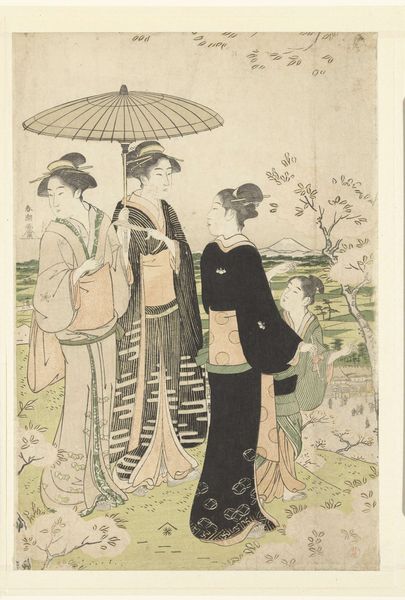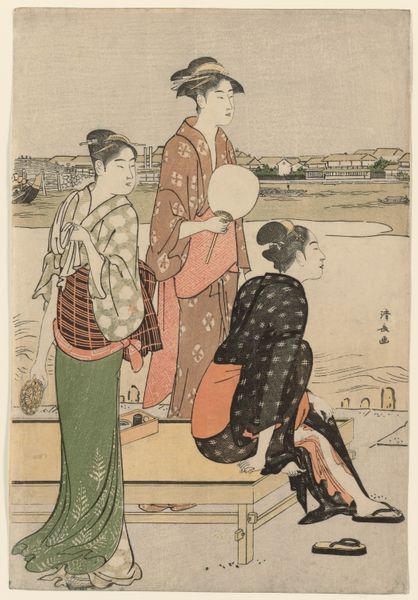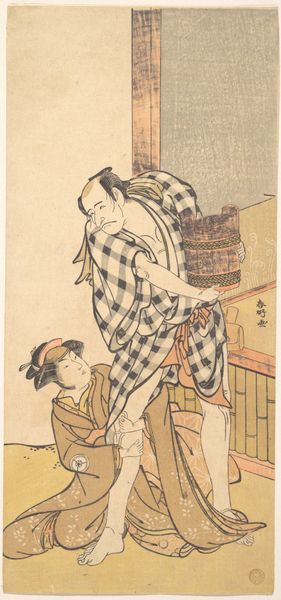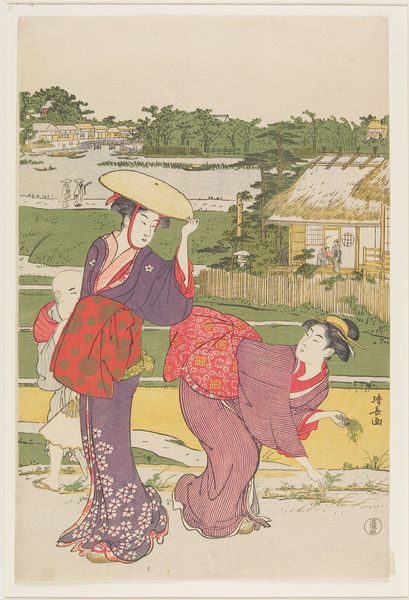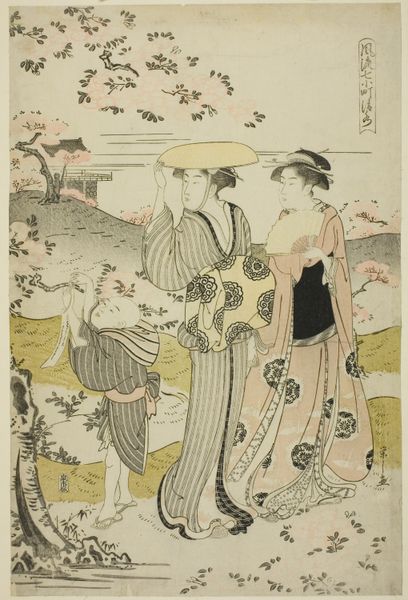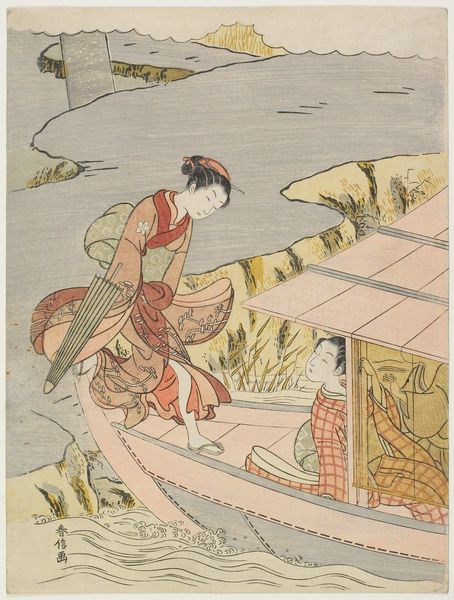![['Journal des Dames et des Modes: the Fashion Illustrators', 'Journal des Dames et des Modes: Fashion News'] by Monogrammist MFN](/_next/image?url=https%3A%2F%2Fd2w8kbdekdi1gv.cloudfront.net%2FeyJidWNrZXQiOiAiYXJ0ZXJhLWltYWdlcy1idWNrZXQiLCAia2V5IjogImFydHdvcmtzL2ViNDc1NDJmLTRmZTMtNDlkMi05NGU1LTM1NmVmMjdlZjJmMC9lYjQ3NTQyZi00ZmUzLTQ5ZDItOTRlNS0zNTZlZjI3ZWYyZjBfZnVsbC5qcGciLCAiZWRpdHMiOiB7InJlc2l6ZSI6IHsid2lkdGgiOiAxOTIwLCAiaGVpZ2h0IjogMTkyMCwgImZpdCI6ICJpbnNpZGUifX19&w=3840&q=75)
['Journal des Dames et des Modes: the Fashion Illustrators', 'Journal des Dames et des Modes: Fashion News'] 1913
0:00
0:00
drawing, print, paper, pen
#
portrait
#
drawing
#
art-nouveau
# print
#
figuration
#
paper
#
pen
#
watercolour illustration
#
genre-painting
Dimensions: height 175 mm, width 106 mm
Copyright: Rijks Museum: Open Domain
Curator: This watercolor illustration, “Journal des Dames et des Modes: Fashion News” from 1913 presents two figures in conversation, one seated and the other standing. The rendering offers an interesting visual encounter. What is your immediate impression? Editor: I'm drawn to the textures, suggested as they are. The polka dots on the seated woman’s dress, the checked pattern of the girl’s dress; the treatment of these ordinary, mass-produced patterns in the service of high fashion is fascinating. The paper, the pen strokes – it all feels quite tangible, doesn’t it? Curator: Absolutely. Beyond the visible rendering, let’s examine how this fashion plate participated in constructing a cultural ideal, or, in other words, what intersectional issues are we dealing with here? It clearly promotes a specific image of women's fashion in early 20th century Paris but its message reflects power structures inherent in society. This creates a rather class-specific fantasy. Editor: Right, the materials reflect this, of course. The original publication process allowed for mass distribution of aspirational imagery, playing on both accessibility and exclusivity. The relatively simple pen and watercolor strokes could be replicated and consumed widely. How fascinating to explore the material realities of desire and dissemination. Curator: And that extends beyond simple representation. What does it mean to display and perform elite feminity at the nexus of colonial powers? The fashion is one dimension of material display of cultural identity but the bodies, the activities suggested here indicate ways women can act as economic agents that mirror a form of societal authority. Editor: The layering here really works. This illustration utilizes a printmaking background which could produce copies on paper as a method for consumption for a larger group to access information about social life. It allowed for the visualization and understanding of cultural norms. I see labor implicit within this print. The artist made use of pen strokes and watercolor washes, making design decisions, laboring at their table, allowing viewers of the illustration an understanding of these fashionable forms that create our social reality. Curator: Thank you. Reflecting on this piece and fashion illustration in general really forces a reconsideration about social forces at play that shape norms surrounding the construction and visual representation of feminine identities in turn of the century Paris. Editor: I concur; it provides insight on consumer society that would encourage an investment into oneself while taking advantage of the latest trends and cultural capital.
Comments
rijksmuseum about 2 years ago
⋮
['The Journal des Dames was inspired by the eponymous fashion magazine from the previous century and, like the earlier publication, referred to its illustrations as Costumes Parisiens. These Costumes Parisiens (184 illustrations in total) were drawn in a new, flat, decorative manner by George Barbier, Jan van Brock, Victor Lhuer and other Parisian artists, each with a signature style. Every issue came with two or three separate plates. These showed a wide variety of fashionable apparel, from elegant evening attire to outdoor outfits. A brief caption provides the name of the garment and the material from which it was made, but never the name of a fashion house.', 'The Journal de Dames et des Modes was marketed towards the affluent, sophisticated elite. The text consisted of literary contributions and articles on various topics written by leading Parisian literati. The fashion commentaries discussed the full spectrum of new trends, such as ‘strolling bareheaded by motorcar,’ matching the colour of one’s dress to that of one’s automobile, the impracticality of small umbrellas, the wearing of sky-blue and grass-green wigs, and the vogue among women for large flat hats or for the small toques adorned with feathers that projected from their foreheads like antennae.']
Join the conversation
Join millions of artists and users on Artera today and experience the ultimate creative platform.

